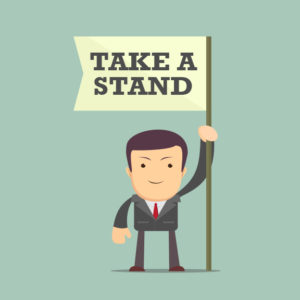Surprise!
April 24, 2019
 One of the truths about marketing is that our work often hints at or takes advantages of cultural trends that are on the rise. I love that we get to leverage emerging shifts and mine them for the truths they contain. They’re like a little surprise waiting for us around the corner.
One of the truths about marketing is that our work often hints at or takes advantages of cultural trends that are on the rise. I love that we get to leverage emerging shifts and mine them for the truths they contain. They’re like a little surprise waiting for us around the corner.
But to do that – we have to recognize and explore those trends.
One that I’ve been tracking for a bit is the idea of letting someone else make buying decisions for you. For a long time, we’ve known that giving a customer too many choices often leads to paralysis and no decision at all. There’s a reason why it’s often suggested that you give a client no more than three choices. But are the customers ready to have no choice?
An interesting new type of travel agency is cropping up and making the news. Imagine answering a few questions about where you’ve recently traveled, the kinds of things you like to do, and then paying for a trip without having any idea where you’re about to go.
Websites like Pack Up + Go, Magical Mystery Tours and The Vacation Hunt are offering this sort of service. They will plan domestic, international or an all-inclusive trips for you. You get an envelope you’re supposed to open at the airport (if you’re flying) or as you get into the car. Voila – that’s where you’re headed for vacation.
Want to hit the high seas? This isn’t just an US-based trend. In Great Britain, The Secret Sailaway will sail to six cities over about two weeks but, that’s right, you book the trip and have no idea where you’re going.
From the little bit of leg work I was able to do, it seems like these mystery travel companies have been around for a year or two. Sailaway just had its maiden voyage in March of 2018. If this does become a full-fledged trend, we’re on the early edge of it.
This specific trend may or may not grow to something significant. But what if it does? Could it change the way you offer your product or services?
That’s what I find most intriguing about trend tracking. Once you start to spot an emerging trend, you can’t help but try to apply it to your world. They’re certainly not all going to impact your work but that doesn’t mean we shouldn’t sharpen our skills at trend spotting.
Rohit Bhargava, author of Non-Obvious: How to Think Different, Curate Ideas and Predict the Future talks about the three traits it takes to be good at recognizing what is shaping up to be a potential trend.
Curate: This is about gathering information and ideas from many sources and looking for the threads that connect those ideas and bits of information. He advocates archiving these fragments using a digital tool like Pocket or Dropbox, so you can step back and look at the bigger picture over time.
Be Curious: Rohit warns that staying curious is getting more difficult every day. With artificial intelligence and algorithms deciding what we see/read, we have to force diversity into our information consumption. He suggests buying books, magazines and consciously choosing to watch programs that aren’t your normal fare and don’t appeal to your interests.
Be Fickle: Don’t get too enamored with any emerging idea. Try to stay neutral so you don’t influence your observations. As a trend spotter, our role is to observe and report without bias. Otherwise, we might dismiss something important.
Given the speed of change in your world today, it pays to have some idea of where tomorrow will land. As Wayne Gretzky suggested, we have to skate to where the puck is going, not where it’s been.
More



